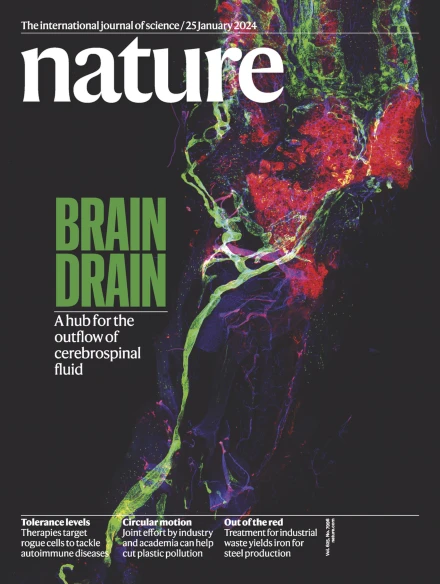Dual regulation of mitochondrial fusion by Parkin–PINK1 and OMA1
IF 50.5
1区 综合性期刊
Q1 MULTIDISCIPLINARY SCIENCES
引用次数: 0
Abstract
Mitochondrial stress pathways protect mitochondrial health from cellular insults1–8. However, their role under physiological conditions is largely unknown. Here, using 18 single, double and triple whole-body and tissue-specific knockout and mutant mice, along with systematic mitochondrial morphology analysis, untargeted metabolomics and RNA sequencing, we discovered that the synergy between two stress-responsive systems—the ubiquitin E3 ligase Parkin and the metalloprotease OMA1—safeguards mitochondrial structure and genome by mitochondrial fusion, mediated by the outer membrane GTPase MFN1 and the inner membrane GTPase OPA1. Whereas the individual loss of Parkin or OMA1 does not affect mitochondrial integrity, their combined loss results in small body size, low locomotor activity, premature death, mitochondrial abnormalities and innate immune responses. Thus, our data show that Parkin and OMA1 maintain a dual regulatory mechanism that controls mitochondrial fusion at the two membranes, even in the absence of extrinsic stress. We find that, in mice, although the individual loss of Parkin or OMA1 does not affect mitochondrial integrity, their combined loss results in small body size, low locomotor activity, premature death, mitochondrial abnormalities and innate immune responses.


Parkin-PINK1和OMA1对线粒体融合的双重调控
线粒体应激途径保护线粒体免受细胞损伤1,2,3,4,5,6,7,8。然而,它们在生理条件下的作用在很大程度上是未知的。通过对18只单、双、三重全体和组织特异性敲除和突变小鼠进行系统的线粒体形态分析、非靶向代谢组学和RNA测序,我们发现两个应激反应系统(泛素E3连接酶Parkin和金属蛋白酶oma1)之间的协同作用通过线粒体融合保护线粒体结构和基因组,由外膜GTPase MFN1和内膜GTPase OPA1介导。虽然个体丧失Parkin或OMA1并不影响线粒体完整性,但它们的联合丧失会导致体型小、运动活动低、过早死亡、线粒体异常和先天免疫反应。因此,我们的数据表明,即使在没有外部应激的情况下,Parkin和OMA1也维持着双重调节机制,控制着两种膜上的线粒体融合。
本文章由计算机程序翻译,如有差异,请以英文原文为准。
求助全文
约1分钟内获得全文
求助全文
来源期刊

Nature
综合性期刊-综合性期刊
CiteScore
90.00
自引率
1.20%
发文量
3652
审稿时长
3 months
期刊介绍:
Nature is a prestigious international journal that publishes peer-reviewed research in various scientific and technological fields. The selection of articles is based on criteria such as originality, importance, interdisciplinary relevance, timeliness, accessibility, elegance, and surprising conclusions. In addition to showcasing significant scientific advances, Nature delivers rapid, authoritative, insightful news, and interpretation of current and upcoming trends impacting science, scientists, and the broader public. The journal serves a dual purpose: firstly, to promptly share noteworthy scientific advances and foster discussions among scientists, and secondly, to ensure the swift dissemination of scientific results globally, emphasizing their significance for knowledge, culture, and daily life.
 求助内容:
求助内容: 应助结果提醒方式:
应助结果提醒方式:


